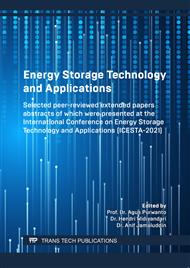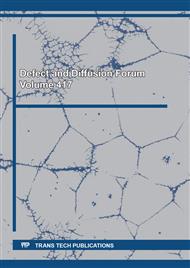p.131
p.141
p.153
p.163
p.169
p.177
p.191
p.207
p.219
Effects of Conductive Agents on Electrochemical Performance of Water-Based LiNi0.6Mn0.2Co0.2O2 Cathodes for Cylindrical Cell Production of Lithium-Ion Batteries
Abstract:
Lithium-ion batteries have received much attention for their potential use in electric vehicles (EV's) and portable electronic devices. Fabrication of lithium ion (Li-ion) batteries via ecologically sound (green) processes is also of great interest. Typically, in the production of cathode electrodes, organic solvents such as N-methyl-pyrrolidone (NMP) are used, but these chemicals are toxic. Water-based processing of LiNi0.6Mn0.2Co0.2O2 (NMC) for manufacturing cathode electrodes can provide a more environmental friendly option. In this work, water soluble styrene butadiene copolymer (SBR) and carboxymethyl cellulose (CMC) are used as binders. The active material ratio was set at 90%. The electrochemical performance of water-based NMC electrodes is examined. Additionally, various conductive agents were considered including acetylene black (A) and graphite (B). The particle sizes of conductive agent affect the electrochemical performance of the batteries. Our results show that replacing the conventional organic solvent-based manufacturing route for NMC cathodes with a water-based process is a promising way to fabricate Li-ion batteries with comparable electrochemical behavior, while avoiding toxic process materials and simultaneously reducing the overall manufacturing costs.
Info:
Periodical:
Pages:
169-176
Citation:
Online since:
June 2022
Keywords:
Price:
Сopyright:
© 2022 Trans Tech Publications Ltd. All Rights Reserved
Share:
Citation:



